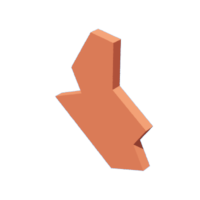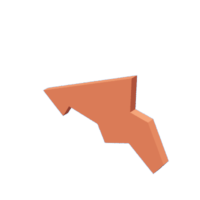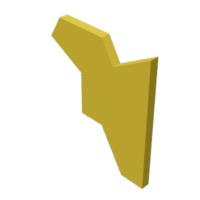Introduction: Einstein Tile Puzzle
Here is an open-ended tile puzzle that you can make with either a 3D printer or laser cutter. It is based on the newly discovered einstein shape which can completely cover an infinite plane with never repeating patterns; all from just one single tile shape!
By open-ended puzzle I mean you can print/cut any number of tiles in two or more different colors and try to assemble them in specific color patterns; or you can try to fit them into a given frame; or you can just play with them to create your own shapes and patterns. The only rule is that you leave no empty space between the tiles. It is entertaining to put a bunch of tiles together and then run into a formation where you can’t fit another tile without leaving an empty space. Then you'll have to go back and rearrange a few of the prior tiles. It’s more difficult than it appears at first.
As a side note, the title image will not give you a complete infinite plane tiling as it leaves the center hexagon untiled. Sometimes you have to break the rules to make a pretty pattern.
Supplies
3D printing filament, two or more colors
or 1/8" thick baltic birch plywood or hardwood
3D printer or laser cutter
Cardboard and scissors will also do!
Step 1: Making and Playing With the Tiles
So here is the shape of the einstein tile. Most people, including the discoverer of the tile call it the “hat”. To me it looks more like a t-shirt.
Attached is a stl file for you to 3d print; as well as a svg file for laser cutting. If you don't have a 3D printer or laser cutter you can also print the pdf file and cut the einstein tiles out of cardboard. The size of the tile is about 2 inches (about 52 mm) across the sleeves of the t-shirt. I 3d printed my tiles 1/8" (3mm) thick.
Print 24 or more tiles in two different colors and start assembling them, leaving no blank spaces in the tiling. Now try to arrange the colors in a regular pattern. Tiles may be put down with either side facing up.
Step 2: Filling a Hexagonal Frame
In this variation I prepared eleven truncated tiles to form an outside border in the shape of a hexagon (90 mm long sides, about 3.5 inches). Fit eleven einstein tiles together with the eleven border tiles to create a hexagonal shape. How long did it take you? I included a hexagonal frame to keep the tiles together.
Create your own variations of border tiles for different shapes of the completed puzzle.
Attachments
Step 3: Creating a Geometric Pattern
Create this shape: a small hexagonal space surrounded by three rings of Einstein tiles. For three rings you will need 42 tiles. If you have more tiles expand the pattern further outward. Of course this arrangement is not a true infinite space tiling as the center hexagon remains untiled. But it looks pretty!
That's it. Play with the tiles and come up with some new ways to put them together! Enjoy!




























